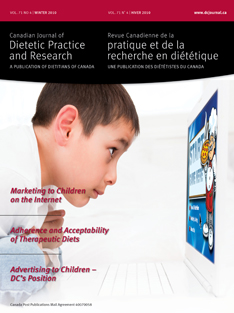Abstract
Purpose: The aim was to develop a strategy for evaluating food sensory quality in an institutional setting, the Parameter Specific Sensory Quality (PSSQ) approach, and to compare the inter-evaluator judgement concordance (IEC) using the PSSQ tool versus a traditional tool (TT).
Methods: Inter-evaluator judgement concordance was assessed before and after participants underwent 12 (Study 1) or eight hours of training (Study 2). In Study 1, the IEC was determined before training using the traditional tool only (29 food items) and after training using both the traditional tool and the PSSQ (28 food items). In Study 2, the IEC was determined before and after training using the PSSQ (19 food items). Intraclass correlation coefficients (ICCs) were used to measure the IEC, and data were compared using Fisher's transformation.
Results: Study 1 highlighted the poor IEC for the traditional tool in general (ICCpre=0.41 vs. ICCpost=0.43; p>0.1), especially in comparison with that for the PSSQ (ICCPSSQ=0.88 vs. ICCTT=0.43; p<0.01). Study 2 corroborated the excellent performance of the PSSQ, even when participants had as few as eight hours of training (ICCpost=0.93).
Conclusions: The inter-evaluator judgement concordance in the evaluation of food sensory quality is fundamental to the generation of valid and useful information. Study results suggest that the food sensory IEC could be improved in hospital settings through the use of a parameter-specific approach, and that this improvement could help ensure the provision of foods of consistent quality.
Résumé
Objectif: L'objectif était de développer une stratégie d’évaluation de la qualité sensorielle des aliments dans un contexte institutionnel l'approche Parameter Specific Sensory Quality (PSSQ), et de déterminer la concordance inter-juges (IEC) en utilisant l'outil PSSQ et un outil traditionnel (TT).
Méthodes: L'IEC a été évaluée avant et après que les participants aient suivi une formation de 12 (étude 1) ou de 8 heures (étude 2). Dans l’étude 1, l'IEC a été établie avant la formation à l'aide du TT seulement (29 aliments) et après la formation à l'aide des deux outils [TT et PSSQ (28 aliments)]. Pour l’étude 2, l'IEC a été déterminée à l'aide du PSSQ avant et après la formation (19 aliments). L'IEC a été établie à l'aide du coefficient de corrélation intra-classe (ICC), et les données ont été comparées après une transformation de Fisher.
Résultats: L’étude 1 a mis en évidence la faible IEC générale de l'outil traditionnel (ICCpré = 0,41 vs ICCpost = 0,43; p > 0 1) par rapport au PSSQ (ICCPSSQ = 0,88 vs ICCTT = 0,43; p < 0,01). L’étude 2 a confirmé l'excellente performance du PSSQ, même si les participants n'avaient suivi que 8 heures de formation (ICCpost = 0,93).
Conclusions: La concordance inter-juges est cruciale pour l’évaluation de la qualité sensorielle des aliments afin de générer de l'information utile et valide. Les résultats de l’étude suggèrent que l'IEC pourrait être améliorée dans un contexte hospitalier par l'utilisation d'une approche faisant appel à des paramètres précis. Une telle amélioration favoriserait l'uniformité de la qualité des aliments.



